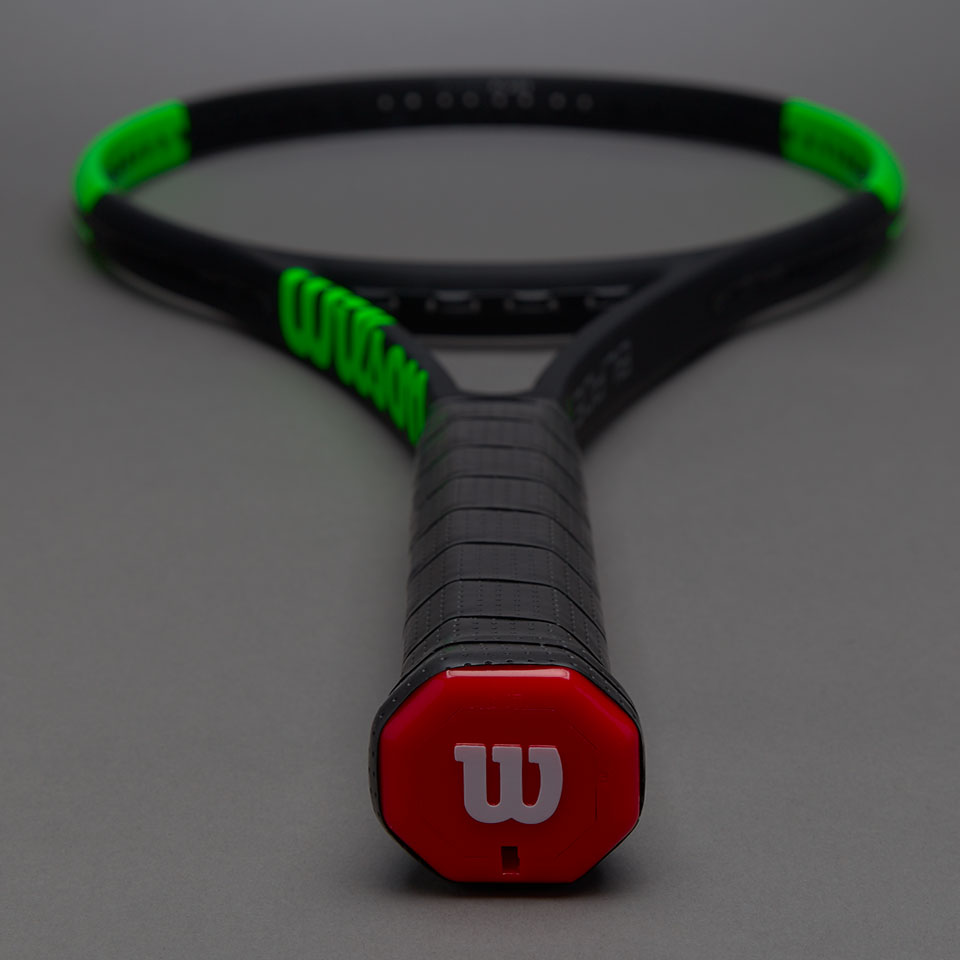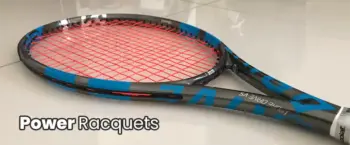One of the most popular racquets among promising juniors and more advanced players of late has been the Wilson Blade series. Wilson has managed to find that nice blend between control and power in a racquet that is relatively easy to play with but also not too harsh on your arm, which could be the case with a Babolat Pure Drive for example.
Most popular racquet models are updated every two years and a few months ago Wilson released their new Blade line – this time including Countervail technology. Countervail is meant to reduce shock and according to sources top three player Milos Raonic is already using Countervail in his Blade pro stock racquets.
Countervail is vibration-cancelling technology that is also used in Bianchi bicycles. Whether it works well in tennis racquets is quite hard to identify, although play-testers does talk about increased comfortability despite a higher RA (albeit only one point, Countervail Blades are at 65 while the previous version was at 64).
You want to find out more information about Countervail technology, read this article from SportTechie.
Testing the Wilson Blade 98 with Countervail
I used the previous version of the Wilson Blade 98 (18×20) quite happily for about six months until racquetholism set in and I went to the Prince Textreme Tour 95. The only real issue I had was that it felt somewhat stiff at times and I wondered if Countervail would reduce that feeling. I did try a bunch of strings in the previous version: Solinco Hyper-G, Luxilon 4Gs, Diadem Solstice Pro, and the racquet played without major difference which means it is a pretty happy ride no matter what string you use as long as you string it low (22-23 kg is my max tension). For my demo version of the Wilson Blade 98 with Countervail
I had it strung with Luxilon Alu Power
.
Since the previous version played so great it must have been difficult for Wilson Tennis to find a way to make it better. Maybe more users had the concerns about stiffness that I had and they were looking for a way to dampen the harshness? No matter what, from what I hear from people using the Countervail version of the Wilson Blade 98, Wilson succeeded in making it a more muted racquet. In fact it was so muted at times that I had a hard time finding the range on my shots. The feel sure made it comfortable, but I also felt a little out of touch. To really groove with this racquet you need to spend some decent time with it. It performs really well on all areas, although if you’re looking for power, you don’t get tons of free juice with this one. It’s more in the spectrum of control-oriented racquets and to get some extra power you should string it quite low. I’m sure you could go as low as 20 kgs in tension without spraying balls.
I haven’t tried the 16×19 string pattern yet, but my guess is I’d prefer that more to get a little bit extra spin on the ball. The launch ange on this Blade 98 18×20 with Countervail is rather low and when you’re used to 16 main strings that might take some adjustment. I personally prefer the Wilson Blade 98 from 2015 more because I like the responsiveness of that racquet, but it’s all about taste in the end.
Whether you like feedback or more comfort is up to you, no matter what – the Wilson Blade 98 line is one of the best racquets out there and it’s nice that they give you an option of string patterns to choose from: 18×20, 16×19 and the lighter S version with 18×16.
Another difference from the previous version is a slight bump up in swing weight. Since the Wilson Blades aren’t heavy racquets, I think this could easily be counter-weighed with some lead tape, but it’s still good to keep in mind. The higher swing weight makes the racquet slightly more difficult to swing, but definitely more stable so that’s also a decision for the user to make.
Buy Wilson racquets from one of our affiliates:
Amazon
Racquet Depot (UK)
Do It Tennis
Tennis Express
Specs for Wilson Blade with Countervail
| Head Size: | 98 sq. in MP |
| Length: | 27 inches |
| Weight: | Strung — 11.2 oz Unstrung — 10.7 oz |
| Tension: | 50-60 Pounds |
| Balance: | 6 Pts Head Light |
| Beam Width: | 20.6mm Flat Beam |
| Composition: | Braided Graphite/Basalt/Countervail |
| Flex: | 62 |
| Grip Type: | Wilson Sublime |
| Power Level: | Low |
| String Pattern: | 18 Mains / 20 Crosses Mains skip: 8T, 8H, 10T, 10H Two Piece No Shared Holes |
| Swing Speed: | Fast |
| Swing Weight: | 326 |
















I just bought a Blade 98 16×19, and am new at tennis. I thought that I would post this just to let you know that I appreciate your article, and your experience with this Frame.
Hi Justin,
Thanks Justin. Hope you enjoy the racquet! Cheers / Jonas
hi,
I’m playing with the yonex DR98 and I love this stick.
I have lead tape ad 3 and 9 of DR and leather grip.
But…. I search for more spin, do you think that the 98s CV is a good option? What about the control of this stick and power?
Thank’s
Hi,
The DR98 with lead is a great stick. Maybe it’s worth trying the extended one? I’m not a fan of the Countervail racquets to be honest, but you could try a 16×19 Wilson Blade or a personal favourite of mine the Wilson Six One 95S. You can find them cheap-ish on Amazon. Cheers / Jonas
Is this really 62RA. Tennis Warehouse’s specs suggest 65RA.
Jonas, can you compare Blade 18×20 2015 with Prince Textreme Tour 100p, also 2015?
Regards !
Countervail = low power must say.
Good info.
How can I know my speed swing or how can I know what swing weight is good for me?
Thanks I appreciate your nice article